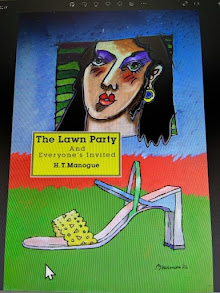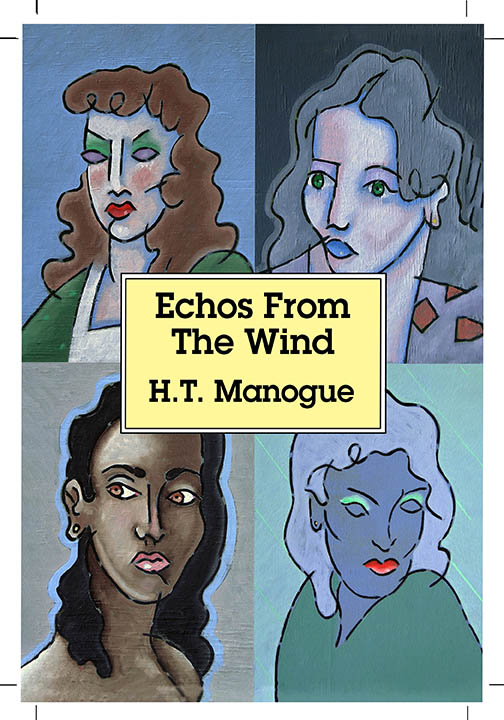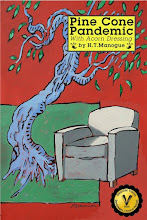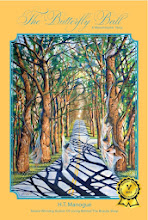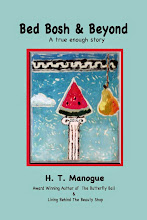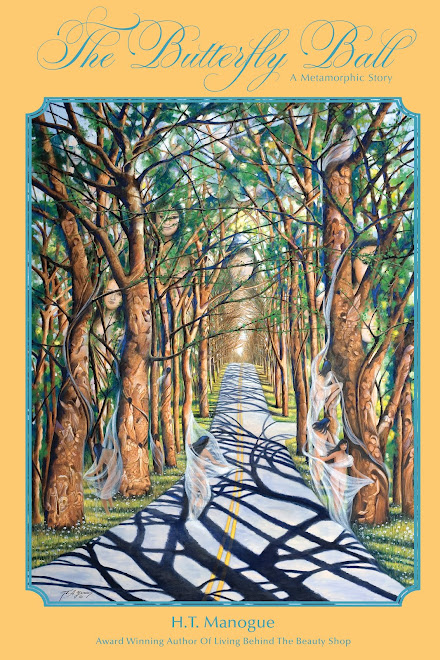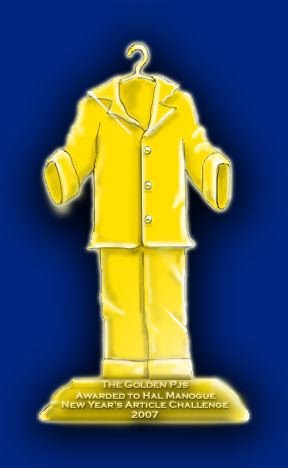The hour is striking so close above me,
So clear and sharp,
That all my senses ring with it.
I feel it now: there’s a power in me
To grasp and give shape to my world.
I know that nothing has ever been real
Without my beholding it.
All becoming has needed me.
My looking ripens things
And they come towards me, to meet and be met.
Rilke wrote the Book of Hours between 1899 and 1903. The book was published in 1905, and the poem above is the first poem in the section called The Book of a Monastic life.
Rilke’s message is a simple but complex one to understand. The hour Rilke talks about has been the topic of religious discussions for centuries. Is the hour real, and is our beholding of it real? The answer lies in our becoming.
Becoming is an interesting thought. We are becoming in awareness. A veil is being lifted from our senses, and our minds ring with the creative act of feeling. The realness of the moment is reinforced by the hour striking our perceptions. Time mails the envelope of sanity to a grave-site, and the postmark on its face is stamped with the memory of an hour. The hour without minuteness is buried within the hours. Those hours scream for more until our becoming pulls on the faceless hands of hours and we feel the power. That feeling ripens the hour of that which we already are.
Friday, February 27, 2015
Friday, February 20, 2015
Our Religious Wave
The notion that somebody literally made the world─ that is what is known as artificialism. It is the child’s way of thinking: the table is made, so somebody made the table. The world is here, so somebody must have made it.
There is another point of view involving emanation and precipitation without personification. A sound precipitates air, then fire, then water and earth─ and that’s how the world becomes.
The whole universe is included in this first sound, this vibration, which then commits all things to fragmentation in the field of time. In this view, there is not someone outside who said, “Let it happen.”
Joseph Campbell shared those thoughts with Bill Moyers and then wrote them in his book The Power of the Myth. We do make God in our image. Then we say, he made our world and everything in it. He made the universe and all universes, but we don’t really understand the how and the why of all those makings. God is the be all and do all in our two-thousand-year-old religious wave. If we buck the wave, we buck God. God didn’t say that. Our religious leaders said it for him, her or it.
We talk to God in prayers and with our positive intentions, but God doesn’t always give us the answer we expect. We don’t usually expect much since our religious wave has us covered in sin. Sin is another myth made by men who profess to know what God wants. Obviously God doesn’t want. He has made everything according to our religious wave.
But, as Campbell points out, all this fuss about God is just that. The makings, the fixings and the sin are all man-made myths to make the wave hit the shore of artificialism. There is a better definition of God. God is the eternal expansion of awareness through individual consciousness. Every form of consciousness is expanding in awareness. The universe, the world, man, animals, insects, the air, space and so on. Everything is and has consciousness. Consciousness is the infinite energy within energy. The religious wave has hit the shore of artificialism, but it is in the process of expanding the awareness of its individual consciousness.
There is another point of view involving emanation and precipitation without personification. A sound precipitates air, then fire, then water and earth─ and that’s how the world becomes.
The whole universe is included in this first sound, this vibration, which then commits all things to fragmentation in the field of time. In this view, there is not someone outside who said, “Let it happen.”
Joseph Campbell shared those thoughts with Bill Moyers and then wrote them in his book The Power of the Myth. We do make God in our image. Then we say, he made our world and everything in it. He made the universe and all universes, but we don’t really understand the how and the why of all those makings. God is the be all and do all in our two-thousand-year-old religious wave. If we buck the wave, we buck God. God didn’t say that. Our religious leaders said it for him, her or it.
We talk to God in prayers and with our positive intentions, but God doesn’t always give us the answer we expect. We don’t usually expect much since our religious wave has us covered in sin. Sin is another myth made by men who profess to know what God wants. Obviously God doesn’t want. He has made everything according to our religious wave.
But, as Campbell points out, all this fuss about God is just that. The makings, the fixings and the sin are all man-made myths to make the wave hit the shore of artificialism. There is a better definition of God. God is the eternal expansion of awareness through individual consciousness. Every form of consciousness is expanding in awareness. The universe, the world, man, animals, insects, the air, space and so on. Everything is and has consciousness. Consciousness is the infinite energy within energy. The religious wave has hit the shore of artificialism, but it is in the process of expanding the awareness of its individual consciousness.
Saturday, February 14, 2015
The Nest Of Angels
Jonathan Seagull spent the rest of his days alone, but he flew away out beyond the Far Cliffs. His one sorrow was not solitude, it was that other gulls refused to believe the glory of flight that awaited them; they refused to open their eyes and see.
He learned more each day. He learned that a stream-lined high-speed dive could bring him to find the rare and tasty fish that schooled ten feet below the surface of the ocean; he no longer needed fishing boats and stale bread for survival. He learned to sleep in the air, setting a course at night across the offshore wind, covering a hundred miles from sunset to sunrise. With the same inner control, he flew through heavy sea-fogs and climbed above them into dazzling clear skies . . . in the very times when every other gull stood on the ground, knowing nothing but mist and rain. He learned to ride the high winds far inland, to dine there on delicate insects.
What he had once hoped for the flock, he now gained for himself alone; he learned to fly and was not sorry for the price he had paid. Jonathan Seagull discovered that boredom, fear and anger are the reasons that a gull’s life is so short, and with these gone from his thoughts, he lived a long fine life indeed.
Richard Bach opened the eyes of readers back in 1970 when Jonathan Livingston Seagull was published. Opening our eyes and seeing is a morning task that starts another day, but we rarely see the beauty of within that task. We are so immersed in the influences and associations of previous days we fail to fly solo as we wake and address each new day. Our sense of beauty is a diluted form of reality where conformity covers our inner awareness.
Paying attention to the creative act of opening our eyes can start a process of knowing that usually waits between the dark shadows of fear. If we pull ourselves out of our fixated bed and wash the cobwebs of objective intoxication from our thoughts, we begin to sense the art of flying. We fly solo into the far reaches of consciousness and we intermingle with clouds of wisdom. We see and sense what we never see as we open our eyes each morning.
Absorbing that wisdom is our birthright. It is our badge of connected individuality. It is the birthplace of the soul and the nest of angels.
He learned more each day. He learned that a stream-lined high-speed dive could bring him to find the rare and tasty fish that schooled ten feet below the surface of the ocean; he no longer needed fishing boats and stale bread for survival. He learned to sleep in the air, setting a course at night across the offshore wind, covering a hundred miles from sunset to sunrise. With the same inner control, he flew through heavy sea-fogs and climbed above them into dazzling clear skies . . . in the very times when every other gull stood on the ground, knowing nothing but mist and rain. He learned to ride the high winds far inland, to dine there on delicate insects.
What he had once hoped for the flock, he now gained for himself alone; he learned to fly and was not sorry for the price he had paid. Jonathan Seagull discovered that boredom, fear and anger are the reasons that a gull’s life is so short, and with these gone from his thoughts, he lived a long fine life indeed.
Richard Bach opened the eyes of readers back in 1970 when Jonathan Livingston Seagull was published. Opening our eyes and seeing is a morning task that starts another day, but we rarely see the beauty of within that task. We are so immersed in the influences and associations of previous days we fail to fly solo as we wake and address each new day. Our sense of beauty is a diluted form of reality where conformity covers our inner awareness.
Paying attention to the creative act of opening our eyes can start a process of knowing that usually waits between the dark shadows of fear. If we pull ourselves out of our fixated bed and wash the cobwebs of objective intoxication from our thoughts, we begin to sense the art of flying. We fly solo into the far reaches of consciousness and we intermingle with clouds of wisdom. We see and sense what we never see as we open our eyes each morning.
Absorbing that wisdom is our birthright. It is our badge of connected individuality. It is the birthplace of the soul and the nest of angels.
Saturday, February 7, 2015
The Consciousness Of No Mind
Zen is what makes the religious feeling run through its legitimate channel and what gives life to the intellect. Zen does this by giving one a new point of view of looking at things, a new way of appreciating the truth and beauty of life and the world, by discovering a new source of energy in the inmost recesses of consciousness and by bestowing on one a feeling of completeness and sufficiency.
That is to say, Zen works miracles by overhauling the whole system of one’s inner life and opening up a world hitherto entirely undreamt of. This may be called a resurrection. And Zen tends to emphasize the speculative element, though confessedly it opposes this more than anything else in the whole process of spiritual revolution, and in this respect Zen makes use of phraseology belonging to the sciences of speculative philosophy.
D.T. Suzuki in his book, Practical Methods of Zen Instruction is explaining Zen in terms we Westerners can understand. The word Zen is used to describe all sorts of acts, things and situations these days, but most of us don’t really understand what Zen really is or how it works. Suzuki spent his lifetime teaching Buddhist philosophy, and is still regarded as the 20th century's most knowledgeable professors of Zen Doctrine. He called his some of his work "The Doctrine of No Mind.”
We all have Zen and the qualities that display its energy. In fact, Zen is creative energy. The Western word for Zen is consciousness or in religious terms, the soul. Consciousness encompasses all things, so Zen is in all things. When we allow the ego to blend with our subjective consciousness, we are in the state of Zen. However, Zen is not a state; it is the awareness of being one with all things.
The dilemma we face is how do we achieve the blending of our ego and our subjective consciousness or soul? Mediation has been used for centuries to achieve this euphoric awareness, but meditation is not the only way to sense the wholeness of Zen. The main way we can be in the zone of wholeness is to allow consciousness to express itself through the ego.
Our consciousness is energy, and it is always expanding. Zen is the creative action of the soul. There is no mind and no ego in Zen; we do without doing. Do without doing means, there is only the energy of creative oneness in our physical actions.
That is to say, Zen works miracles by overhauling the whole system of one’s inner life and opening up a world hitherto entirely undreamt of. This may be called a resurrection. And Zen tends to emphasize the speculative element, though confessedly it opposes this more than anything else in the whole process of spiritual revolution, and in this respect Zen makes use of phraseology belonging to the sciences of speculative philosophy.
D.T. Suzuki in his book, Practical Methods of Zen Instruction is explaining Zen in terms we Westerners can understand. The word Zen is used to describe all sorts of acts, things and situations these days, but most of us don’t really understand what Zen really is or how it works. Suzuki spent his lifetime teaching Buddhist philosophy, and is still regarded as the 20th century's most knowledgeable professors of Zen Doctrine. He called his some of his work "The Doctrine of No Mind.”
We all have Zen and the qualities that display its energy. In fact, Zen is creative energy. The Western word for Zen is consciousness or in religious terms, the soul. Consciousness encompasses all things, so Zen is in all things. When we allow the ego to blend with our subjective consciousness, we are in the state of Zen. However, Zen is not a state; it is the awareness of being one with all things.
The dilemma we face is how do we achieve the blending of our ego and our subjective consciousness or soul? Mediation has been used for centuries to achieve this euphoric awareness, but meditation is not the only way to sense the wholeness of Zen. The main way we can be in the zone of wholeness is to allow consciousness to express itself through the ego.
Our consciousness is energy, and it is always expanding. Zen is the creative action of the soul. There is no mind and no ego in Zen; we do without doing. Do without doing means, there is only the energy of creative oneness in our physical actions.
Monday, February 2, 2015
Conscious Objects
Some people look at their lives and think something like this: "Oh God, what did I live for? Isn't it terrible that I'm going to die? Life was black when it started, bleak when I was here, and it's going to be black again when life ends! What's it all for?" In my view, this blackness and despair has been designed into God's system.
We may not completely believe or even remember this design in this moment, but we have actually created all of it. The "me" that created it is not the person, the personality that identifies itself as Fred, or Martha, or Sam- that's not that person I am speaking about. It's the greater essence of "I," this deeper presence, the working of consciousness itself that is in me, in you, in everyone. That I, working through this body, is the same I that is reflected in the archetypal images of Jesus, Moses, Mohammed, Krishna, all of whom remind us, and continue to remind us, of our true essence. These beings are reflections or representations of our own identification with our greater, deeper I self.
Fred Alan Wolf wrote those thoughts in his book Dr. Quantum's Little Book of Big Ideas. He has a point. We bring negativity into our lives in order to learn from it. Without contrast, there would be no growth. We do live in a self-created reality filled with duplicity of consciousness. Everything in this reality is measured in the consciousness of time. Time is the duration of objects. Without the consciousness of time, there would be no objects. Objects must be surrounded by the consciousness of space to exist in this reality. Time and objects become one consciousness just like the self that creates and the self that experiences.
We create the life we experience to expand the consciousness of our soul or the “I” Dr. Wolf uses as a reference. We create conscious objects that conflict in order to achieve expansion. Sameness in religion, spirituality, and blended preferences are ego-driven attempts to override the intentions of the “I.” In order to expand our consciousness and the consciousness that exists around us, we must express the highs and the lows of being human. The only perfection is the non-perfection and constant expansion of the consciousness we call our internal “I.”
We may not completely believe or even remember this design in this moment, but we have actually created all of it. The "me" that created it is not the person, the personality that identifies itself as Fred, or Martha, or Sam- that's not that person I am speaking about. It's the greater essence of "I," this deeper presence, the working of consciousness itself that is in me, in you, in everyone. That I, working through this body, is the same I that is reflected in the archetypal images of Jesus, Moses, Mohammed, Krishna, all of whom remind us, and continue to remind us, of our true essence. These beings are reflections or representations of our own identification with our greater, deeper I self.
Fred Alan Wolf wrote those thoughts in his book Dr. Quantum's Little Book of Big Ideas. He has a point. We bring negativity into our lives in order to learn from it. Without contrast, there would be no growth. We do live in a self-created reality filled with duplicity of consciousness. Everything in this reality is measured in the consciousness of time. Time is the duration of objects. Without the consciousness of time, there would be no objects. Objects must be surrounded by the consciousness of space to exist in this reality. Time and objects become one consciousness just like the self that creates and the self that experiences.
We create the life we experience to expand the consciousness of our soul or the “I” Dr. Wolf uses as a reference. We create conscious objects that conflict in order to achieve expansion. Sameness in religion, spirituality, and blended preferences are ego-driven attempts to override the intentions of the “I.” In order to expand our consciousness and the consciousness that exists around us, we must express the highs and the lows of being human. The only perfection is the non-perfection and constant expansion of the consciousness we call our internal “I.”
Subscribe to:
Posts (Atom)
